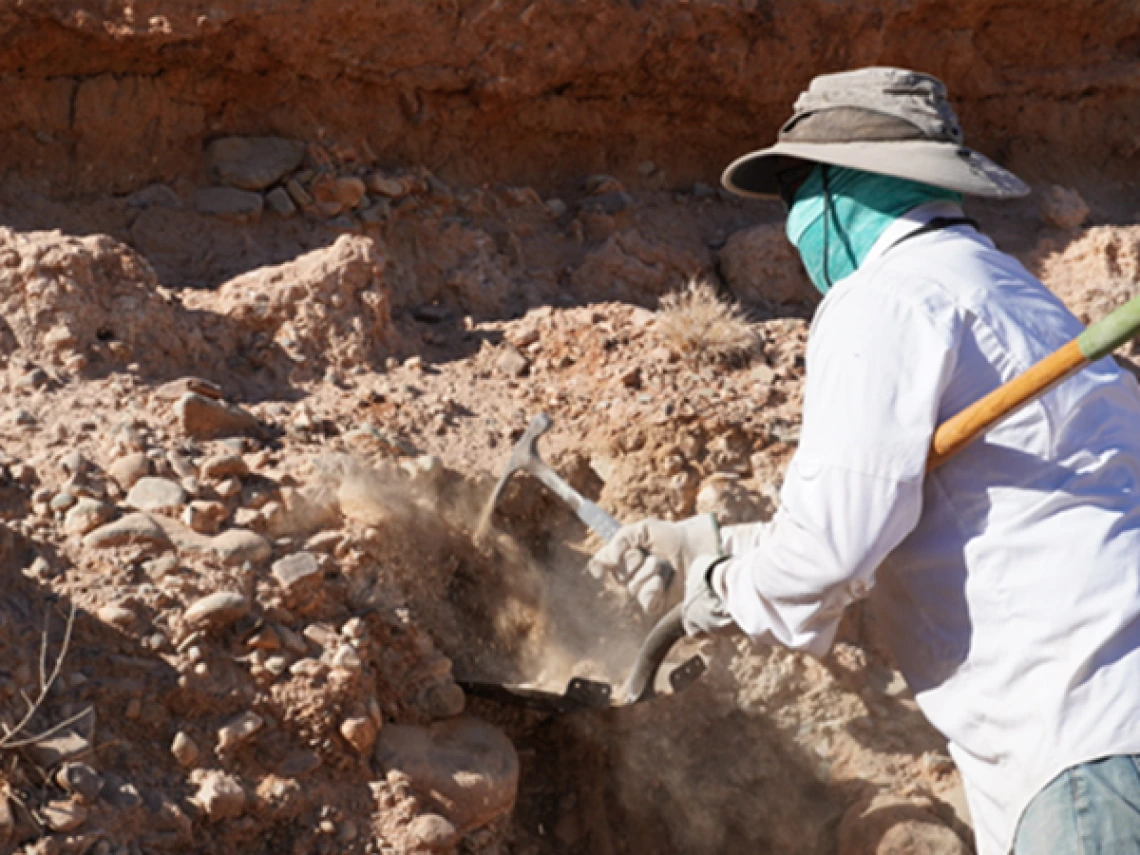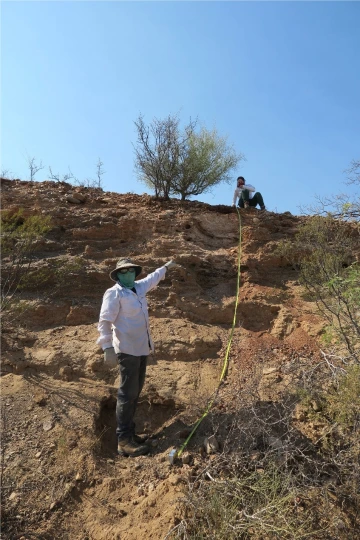Sampling Prospective Capping Materials to Support a Vegetative Cover for Mine Tailings

Dr. Craig Rasmussen chipping away at a soil profile to expose fresh soil prior to chemical and microbial soil sample collection.
Photograph taken by PhD student Kamila Murawska-Wlodarczyk

Research Technician Jessica Ledesma and Professor Dr. Craig Rasmussen measuring the depth of a soil profile in San Manuel after taking chemical and microbial soil samples.
Photograph taken by PhD student Kamila Murawska-Wlodarczyk
Land degradation associated with copper mine waste disposal can greatly impact the biodiversity and health of ecosystems nearby. To reclaim these disposal areas following mine closure, mines typically cap these wastes with up to a foot of soil material to control dust emissions and facilitate the establishment of a vegetative cover.
Capping materials may come from stockpiles that are created and stored at the onset of the mining process or from adjacent native ecosystems. The latter soils require that large areas of topsoil be scraped from native ecosystems, resulting in further disturbance. The goal of Project 5 is to characterize and identify the key bio-physico-chemical properties in prospective capping materials sourced from natural locations and mine stockpiles that are needed to support a successful vegetation cover.
To this end, the UA SRC Project 5 team recently sampled three different locations. These sites were chosen to assess the variability in soil properties amongst natural soil deposits and stockpiled materials in arid and semi-arid regions.
The first two sampling locations were natural soil deposits from two roadcuts in San Manuel, Arizona and two soil borrow pits excavated on an Arizona copper mine. For each roadcut and borrow pit site, the soil profile was cleared away with a pickaxe to expose fresh soil prior to sample collection. Chemical and microbial soil samples were collected based on visual and physical differences with profile depth. Additionally, buckets of soil were collected for subsequent plant growth (rhizobox) studies to evaluate seed germination and seed development in each soil horizon. These samples are now being analyzed for metrics necessary for assessing soil health including: soil texture; analysis of general agronomic properties; analysis of plant micro and macronutrients; and soil DNA biomass.
The last sampling place was located on a second Arizona copper mine site with a large 14-year-old soil stockpile. Two soil cores were drilled to a depth of 20 and 30 meters deep, respectively. Samples were collected at 2.5 foot increments along each core. Each sample was weighed and a sub-sample removed for microbial analysis. The remaining sample was coarsely sieved and will be subjected to bio-physico-chemical analysis and rhizobox studies to understand the effects of long-term stockpiling storage on topsoil health and quality.

